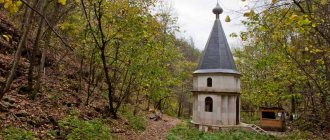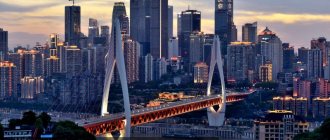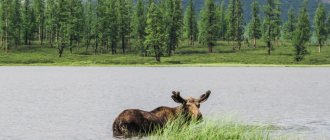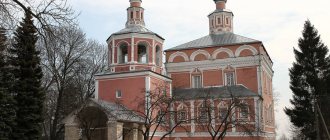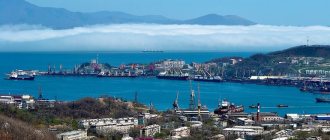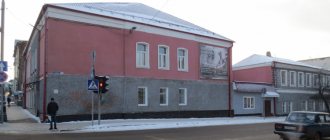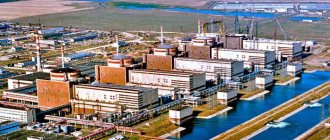Ethnographic composition
The population of Nizhny Novgorod is represented by a huge number of nationalities. There are more than 100 of them. The majority of the population in the city is Russian. There are 95 percent of them.
There are also Tatars, Mordovians, Armenians, Ukrainians, Azerbaijanis, Maris, Belarusians, Chuvashs, Jews and others. 0.12 percent of the population are Yazidis, who belong to the Kurdish ethnicity (Iraq).
Among other ethnic groups, the majority are Nizhny Novgorod Tatars. They make up 1.3 percent of the population.
The indigenous inhabitants of these lands - Erzyans and Mordovians (otherwise called Moksha) - there are only about 3,550 people in the city. This represents 0.28 percent of the city's population. Mostly indigenous small ethnic groups live in the region. These are Lukoyanovsky, Gaginsky, Shatkovsky districts in the south of the region.
Ufa | 707 sq. kilometers
Ufa, whose territory is 707.93 square meters. kilometers, is in fifth place in the list of the largest Russian cities. The population has more than a million inhabitants. The capital of the Republic of Bashkortostan is a major cultural, scientific, economic and sports center of the country. The importance of Ufa was confirmed by the BRICS and SCO summits held here in 2015. Despite the fact that Ufa is a million-plus city, it is the most spacious settlement in Russia - there are almost 700 square meters per resident. meters of city territory. Ufa is considered one of the greenest cities in the country - there are a large number of parks and squares. It is also distinguished by a wide variety of monuments.
Auto
The most densely populated area of the city. On an area of 94 sq. km live 297 thousand people. The area was built around. To date, it has grown to 12 microdistricts and 8 villages. The infrastructure is maximally developed. In addition to GAZ, there are nine other large enterprises that provide the surrounding neighborhoods with jobs.
Transport links include buses, trolleybuses, trams and four metro stations. In summer, passenger ships sail on the river. There are many green areas, including two forest parks, city squares and beach areas. The green area is equipped with everything necessary - food establishments, entertainment and sports grounds.
St. Nicholas Cathedral of Avtozavodsky district
Avtozavod operates cinemas, clubs, museums, exhibition halls, stadiums and sports clubs. From a tourism point of view, interesting:
- six large churches, including the Church of St. Nicholas the Wonderworker;
- mosque;
- Baptist Temple;
- Adventist Christian Temple;
- monuments of local and federal significance;
- steles, monuments and mass graves.
Avtozavod is the most popular area for living in Nizhny. It is constantly being landscaped and landscaped, and the housing stock is growing every year. Housing prices are a third lower than in the center. At the same time, there is the largest concentration of metro stations and public transport routes here.
THIS IS INTERESTING. The Strigino International Airport is located in the area. All air traffic in the region passes through it.
International airport "Strigino" in Avtozavodsky district
Nature of the region
Region 152 (Nizhny Novgorod region) represents several natural zones: steppe zone, coniferous forests, deciduous oak forests. There are fourteen reserves in the region. In 1965, the Gorky Regional Council took under protection thirty rare natural attractions, these include the Ichalkovsky Forest, the Bornukovsky Cave and other places. In 1978, colossal work was carried out to protect the environment: a list was approved that included those species of rare medicinal plants, the collection of which was prohibited; declared protected areas of swamps, steppes, lakes, and those areas where rare plant species grow.
Nizhny Novgorod province after 1917
After the revolution, the current region 152 (Nizhny Novgorod region) has undergone significant territorial changes. In 1922, the province included Vetluzhsky and Varnavinsky districts, previously belonging to the Kostroma province, 6 volosts from the Koverninsky district, 4 volosts from the Tambov province, Kurmyshsky district. The Nizhny Novgorod province increased by almost half. In 1924, some changes occurred again, the territory began to include 4 districts - Sormovsky, Rastyapinsky, Balakhninsky and Kanavinsky, as well as 11 counties.
In 1932, the city of Nizhny Novgorod was renamed Gorky, the territory of the Nizhny Novgorod province in 1937 was transformed into the Gorky region. Only in 1990 did Gorky regain its historical name; it again began to be called Nizhny Novgorod, and the region - Nizhny Novgorod.
Thanks to the ongoing restructuring in the country, in 1991 the city was opened to foreigners. In 1994, the Sokolsky district, previously belonging to the Ivanovo region, was included in the Nizhny Novgorod region.
Top 10 Russian cities with the largest population
The largest cities in Russia are similar in size to the 15 leading cities in terms of area. The five first places are in the capital and cultural capital, Novosibirsk, Yekaterinburg and Nizhny Novgorod. The Top 10 ends with Omsk, Samara and Rostov-on-Don.
| № | City | Population, thousand people |
| 1 | Moscow | 12506 |
| 2 | Saint Petersburg | 5352 |
| 3 | Novosibirsk | 1613 |
| 4 | Ekaterinburg | 1469 |
| 5 | Nizhny Novgorod | 1259 |
| 6 | Kazan | 1244 |
| 7 | Chelyabinsk | 1202 |
| 8 | Omsk | 1172 |
| 9 | Samara | 1163 |
| 10 | Rostov-on-Don | 1130 |
Overall, the top ten has remained stable over the past decade. Cities with a population of over a million attract travelers from all over the country and the world, students, workers and just visitors. The statistics are compiled on the basis of the annual population census conducted by Rosstat.
In Russia, for every thousand cities there are dozens of the largest ones, many of them are included in the rankings every year due to their area and population. Moscow and St. Petersburg have remained the undoubted leaders for a long time. The top five largest cities by territory also include Volgograd, Perm and Ufa, and the 3rd, 4th and 5th millionaire cities are Novosibirsk, Yekaterinburg and Nizhny Novgorod.
Author: Alex Reimers
Article design: Vladimir the Great
Orsk | 621 sq. kilometers
Orsk , which includes three administrative districts with an area of about 621.33 square meters. kilometers, takes seventh place in the list of the largest Russian cities. It is located in a picturesque place - on the spurs of the majestic Ural Mountains, and the Ural River divides it into two parts: Asian and European. The main industry developed in the city is industry. There are more than 40 archaeological sites in Orsk.
Animal world
The Nizhny Novgorod region has many protected places where rare animals and birds live. In the Nizhny Novgorod forests you can find bears, wild boars, moose, wolves, lynxes, foxes, badgers and even wolverines. Among the birds that live in the Nizhny Novgorod region are the golden eagle, black stork, eagle owl, and owl. In addition, brown hare, marmot, mole, speckled gopher, hamster, marten, muskrat, otter, and beaver live here. Full-flowing rivers and lakes are rich in fish.
